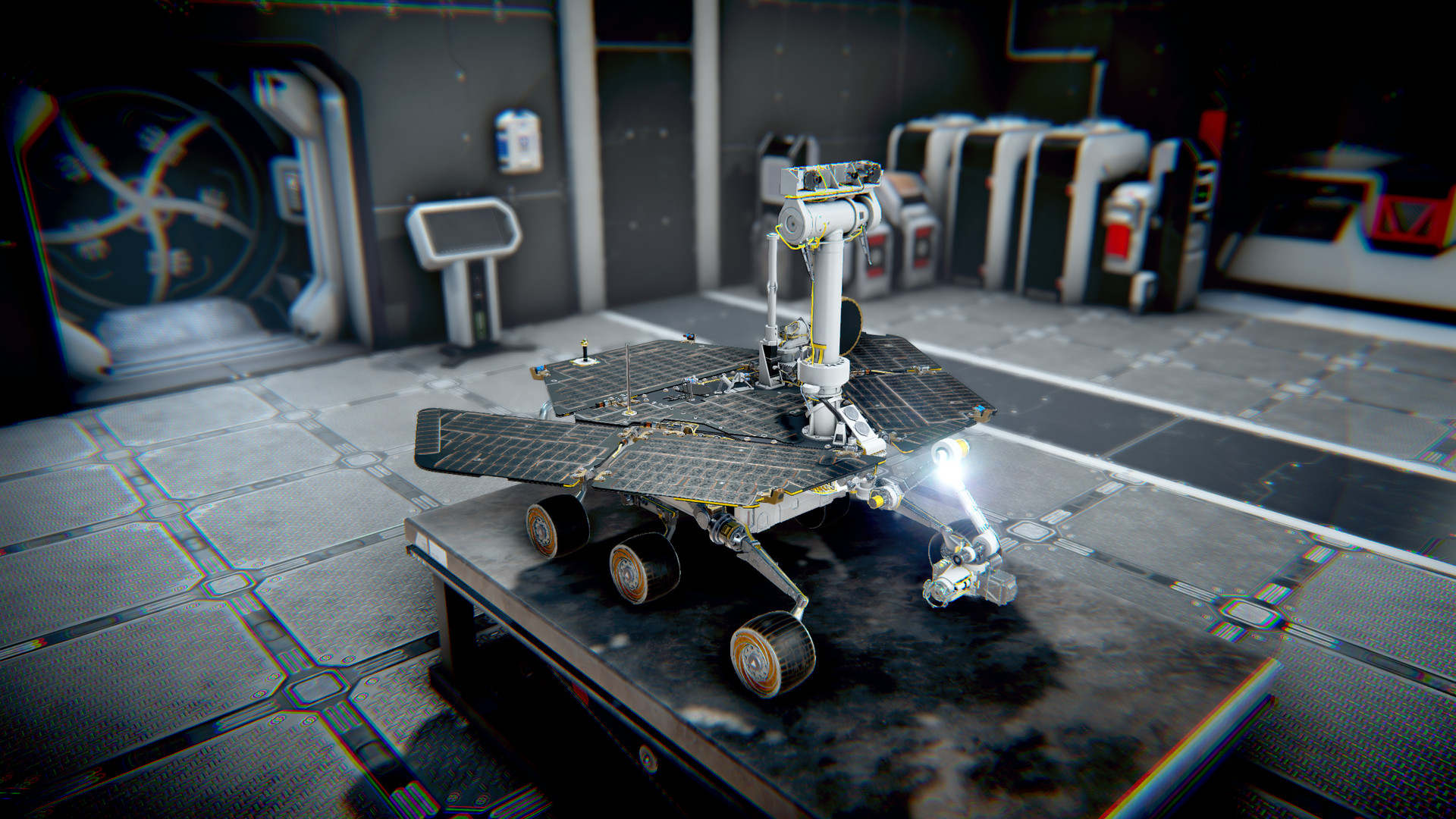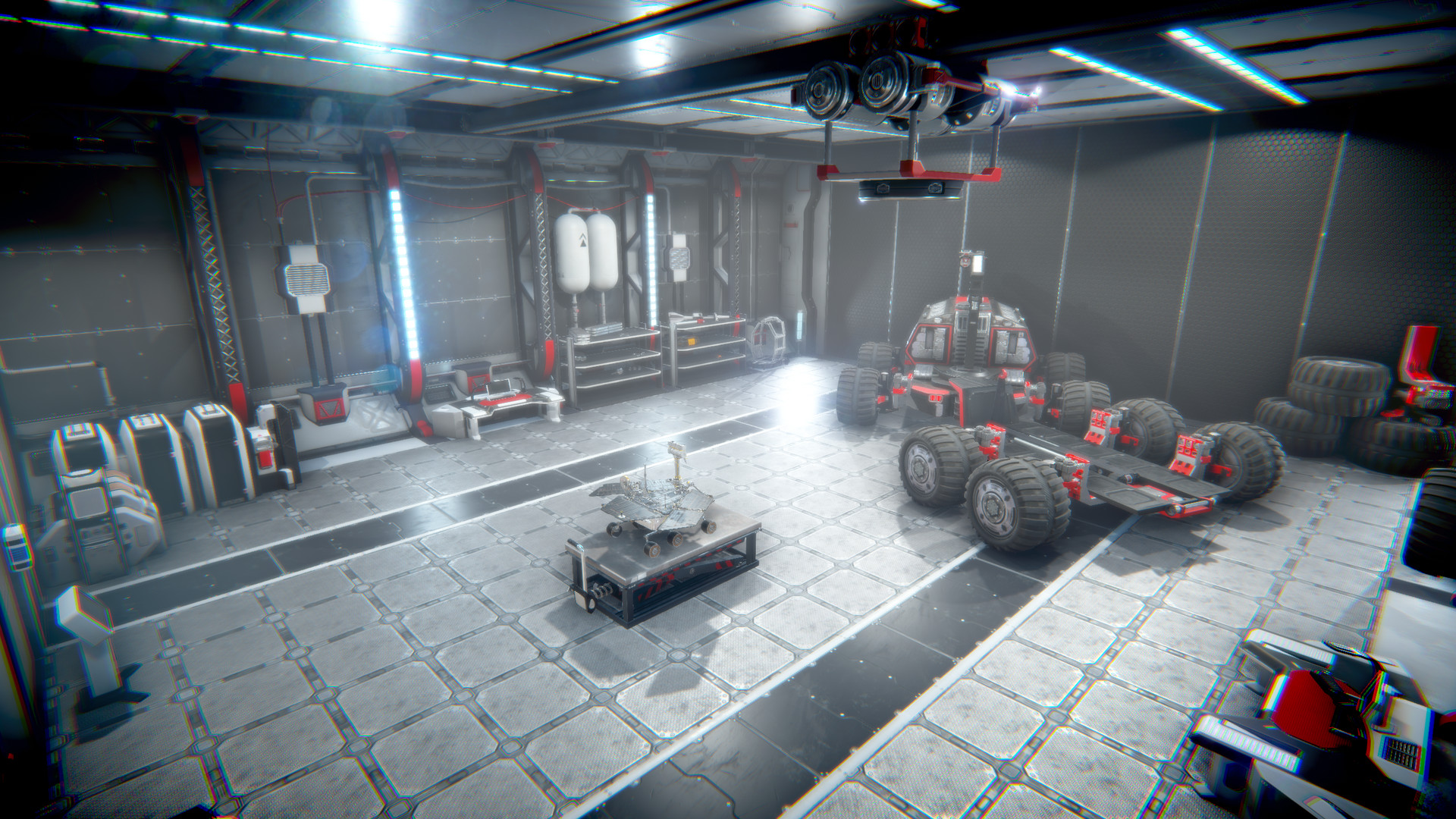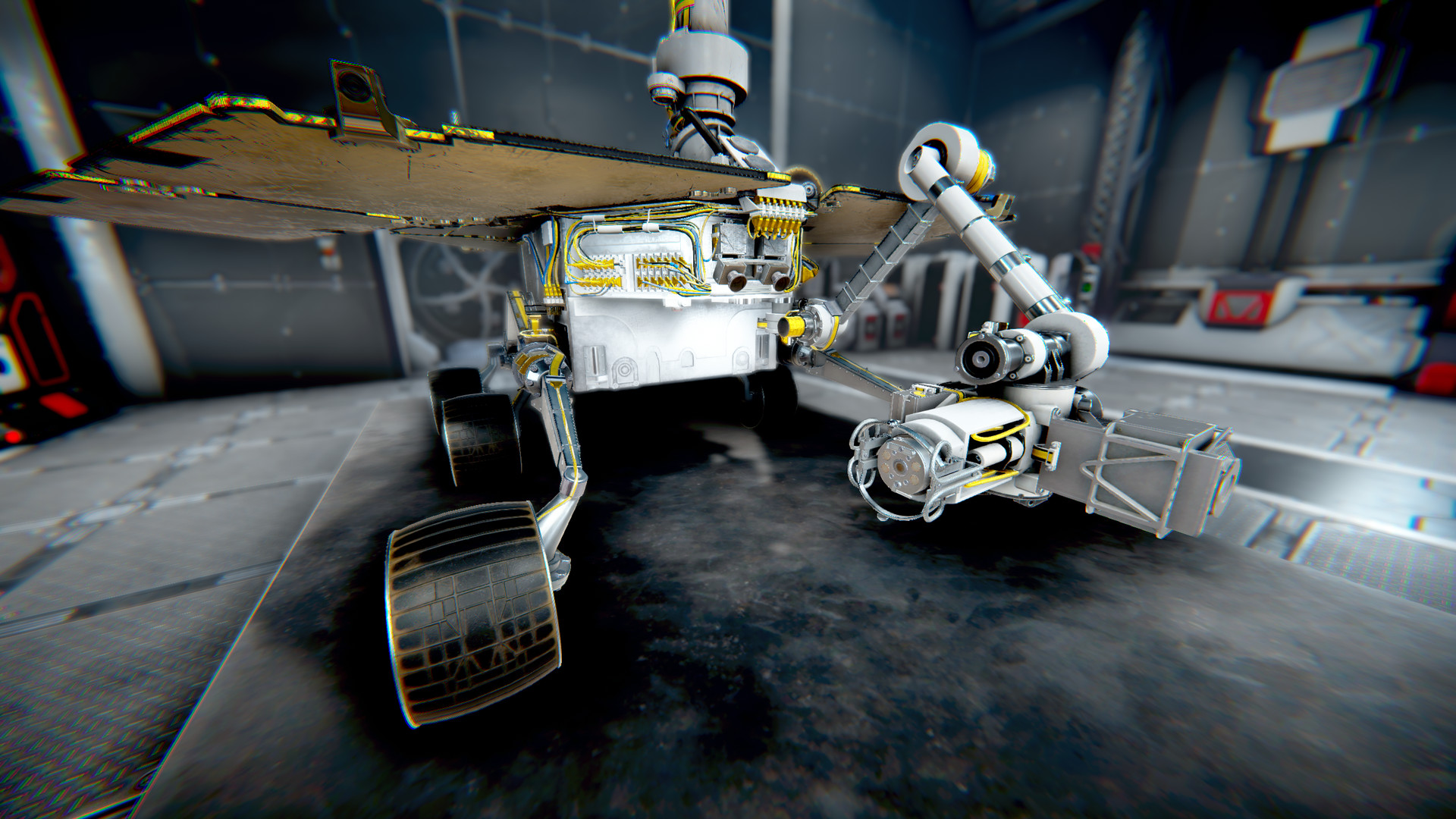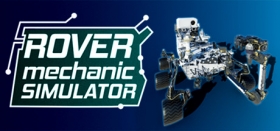
Rover Mechanic Simulator Review
Another week, another release of a simulator game. It seems that no job is too mundane to become a videogame (although how great is PowerWash Simulator?), but a simulator all about being a mechanic on a Mars colony certainly piqued my interest. Cue Rover Mechanic Simulator, from developer Pyramid Games, that has you fixing a variety of detailed Mars Rovers designed to be as accurate as possible. But is Rover Mechanic Simulator worth your time? Or is it best left in the cold expanse of space?
Rover Mechanic Simulator opens with a small message to inform you of the objective of the game, and with no preamble or backstory you enter your garage to begin work on the first of several tutorial tasks. These smaller missions do a great job of easing players into the mechanics, with each objective explaining how a new workbench or computer works, and guiding you every step of the way, taking care not to overwhelm players with walls of text or several things all happening at once.

Here you’ll be introduced to the three modes available in game. The first is the “analyse mode” which allows you to scan each individual piece of the rover (providing you can physically see it), with scanned parts showing up a different colour depending on how damaged they are. Second, the “disassembly mode” allows you to remove the necessary parts in order to find the fault. Finally we have “assembly mode”, which lets you add parts back onto a rover you’ve previously dismantled. All of this sounds fine on paper, but the first tutorial mission hadn’t even finished and already the finicky, imprecise, and sluggish controls were beginning to irritate me.
Rover Mechanic Simulator’s tutorial lasts a good hour or so before you’ll have access to all the machines available in your workstation, and from then on you’re free to select which assignment you wish to take on. Regardless of which one you choose, each plays out almost identically; couple this with the lack of variety in rovers to repair, and you’ll soon run into the game's biggest issue: repetitiveness.
There is very little variation in gameplay, with each repair following the same routine; select a contract, place the rover onto the workbench, find the issue, repair it (or if the part in question is dirty, clean it), play a mini-game, done. Then it’s time for you to pick a new contract and start the process again.
Going into more depth, once you’ve chosen which mission to tackle, you must place the rover down on a workbench using a crane in order to examine it. Contracts will have a small paragraph of information which describes the issue, it’s here you’ll get the clue needed to find the fault. It’s always an obvious hint, such as being told the rover can’t take pictures (hence, the fault lies in one of the cameras), but it’s interesting to not just be straight up told where the problem is. Examining is as simple as hovering the cursor over a piece attached to the rover and holding down a button until a meter fills up, which in turn colours the selected object green, yellow, or red depending on how damaged it is. Removing the broken or dirty item works in much the same way, holding down a button until all the screws have been removed, allowing you to add the item to your inventory.

There is a slight variation in gameplay from here, depending on the piece of the rover that needs repairing. If it’s a full part that can’t be disassembled, such as a tyre or an antenna, then you simply print a new one using a 3D printer, wait until it’s printed, then attach it to the rover. However, if the part is more intricate, or if it’s electronic, then you must take it to a separate workbench to repeat the process on a smaller scale. For example, one of the rovers you’ll come across a lot has a large arm used for capturing images. This will show up as red when you analyse it whilst it’s attached to the rover. Taking the arm to the workbench will have you strip it down even further, to locate the specific part that is causing the problem. This is the same for any electronic components, and once you’ve found the problem, you can 3D print a shiny new piece for repair. You can skip this option entirely and replace the whole thing, but that ends up being much more expensive — even if the credits you earn do nothing other than to buy replacement items at the printer.
Once you’ve reattached everything, you’re done; congratulations on repairing the rover! There is one last task before you can complete the contract, and that’s to play a quick mini-game to get its systems up and running again. Once the rover is fully constructed, you head over to another computer terminal to access a short wire connecting task, which plays exactly like any “connect the pipes” mini-game you may have played before (think the hacking portion of Bioshock). Once you’ve made a connection from the computer to the rover, there are green and red wires that need a numerical value added to them. The numbers are predetermined, and must all add up to a specific number, with green pipes adding to the total value, and red subtracting from it — although the value doesn’t always change and it becomes frustrating guesswork, by picking numbers at random. Again, it’s an aspect of Rover Mechanic Simulator that quickly loses its enjoyment factor, and I never found them a challenge.
Abilities are unlocked via a simplistic skill tree, but it does very little to alter gameplay. Sure, it was nice to be able to fit things back to a rover 30% quicker, but when the skills are just getting me through a mundane task faster, was there really any point carrying on? There was no sense of progression at all, which really takes away any lasting appeal that the game may have otherwise had.

Rover Mechanic Simulator doesn’t look like a 2021 release, with low quality textures on many of the rover parts — in particular, the electronics that need disassembling. It had so much potential to look unique, especially as the small corridor where you begin shows you a glimpse of the planet’s surface before you’re locked inside a room with no windows for the rest of the game. Nor does it sound like a modern game, due to the very noticeable lack of audio. You have a radio that plays the same few songs on a loop, and the sound of your drill as you tinker with a rover, and that’s about it. I couldn’t tell if this was a bug, as certain tools like the soldering iron make no noise at all when used. Very disappointing from both an audio and visual standpoint; a game set on Mars has so much more scope than to just be confined to a walled-in garage with nothing else to do but fix parts of a few different types of Mars Rovers.
There really wasn’t enough to keep me interested in Rover Mechanic Simulator, which is a shame because the idea is a fairly decent one. Pyramid Games could have designed some original rovers, perhaps with alien technology implemented for some truly out-of-this-world vehicles, or let us explore Mars (just to add some variety to the scenery). Even a simple option to be able to speed up the cursor would have made the game less tedious, and some more audio would have been nice!
Rover Mechanic Simulator (Reviewed on PlayStation 4)
Minor enjoyable interactions, but on the whole is underwhelming.
An intriguing concept that falls flat thanks to a repetitive mission structure, a lack of rover variety, wonky controls, and nothing to keep players engaged. Enjoyable for an hour or so, but by then you’ve seen everything Rover Mechanic Simulator has to offer.







COMMENTS